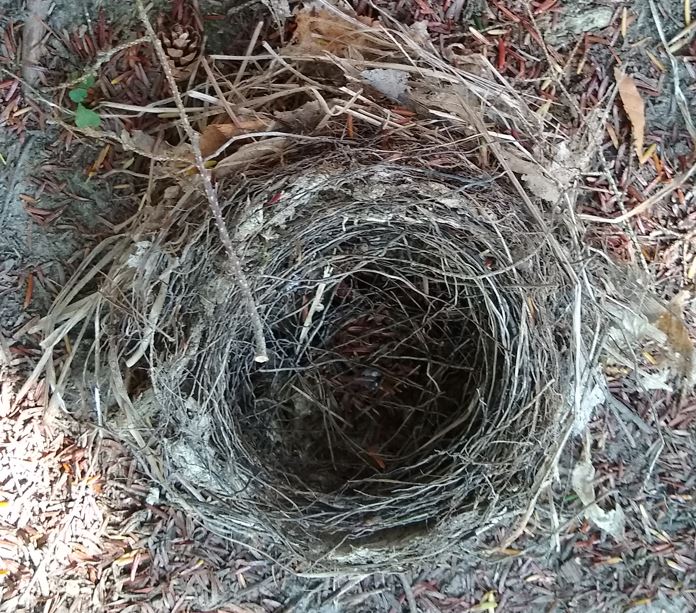 |
From Wikimedia, “Fire triangle.svg”, by Gustavb, March 7, 2006, HERE.
Whenever I teach people how to build a fire,
besides confusing kindling for tinder and not gathering enough wood, the one
thing that everyone gets wrong when lighting a fire, is they forget that fire
burns up!
 |
A Kelly Kettle® fire-base filled with kindling, you can’t light this by dropping a match on it. Photograph by the Author.
This happened again recently, I sat and watched,
while some scouts who were going canoeing with me through the Adirondacks, tried
to start a fire in the fire-base of a Kelly Kettle® and they made exactly this mistake. They made a pile of pencil-sized kindling
sticks, without adding any tinder, and then dropped a match onto the top of the
pile and wondered why the fire wouldn’t light.
So,
let’s go over the basics of lighting a fire!
Gather
Tinder, Kindling and Wood...
 |
An excerpt from Combat and Survival Volume 4, page 227.
Most
people don’t know the difference between tinder, kindling and fuel wood. Tinder isn’t kindling and kindling isn’t fuel
wood.
In
a nutshell, tinder catches the sparks from your flint and steel or flame from
your match and ignites your kindling, kindling takes up the glowing embers of
your tinder and turns it into flames to light your fuel wood on fire.
To
get a fire going quickly and easily, you need to have the right amounts of all
three on hand before you light that first match. Oh, and your tinder and the kindling must be bone
dry.
 |
The biggest difference between tinder, kindling and fuel wood is size. An excerpt of “How To Build A Campfire”, from Scoutmastercg.com, HERE.
Remember
to have plenty of fuel wood on hand, as it always burns faster than people
imagine. Craig White, a Canadian
survival expert, teaches that you will burn through a generous armload of wrist
sized sticks in an hour. A good rule
of thumb to remember is that just over two pounds (one kilogram) of wood is
required to boil one quart (approximately a liter) of water when cooking over a
campfire1.
Make a
Bird’s Nest ...
 |
A bird’s nest, photograph by the Author.
A “Bird’s Nest” is a circle of kindling with tinder in the center. Just like birds, who build a strong ring of
twigs to hold soft grasses and padding to cushion their eggs, you should build
a ring of kindling with tinder in the center to help your fire grow.
 |
A ring of fine pine twigs, surrounding a tinder ball made with a ring of yellow birch bark, around toilet paper and a piece of fuzzed up jute string. Note that I am holding it against a piece of bark, this bark will shield my fingers from the heat of the flames when I light the bird’s nest and will prevent any ground water from extinguishing the new fire. Photograph by the Author.
Remember
Fire Burns Up!
 |
While pinching the bird’s nest against the bark shield, turn it so that the flames will light the tinder and flare up into the kindling surrounding it. Photograph by the Author.
Don’t
forget hot flames and gases rise, which means that you must turn your bird’s
nest, so that the hot flame of your match or lighter rises into it
Now
all you have to do is feed your fire and keep it going. Remember to not put too much wood onto it too
quickly and smother it, start with small pieces of kindling, and then gradually
add wrist-sized pieces of fuel as the flames grow.
Don’t forget to come back next week and read “Kelly Kettles... The
Faster Way to Boil Water!”, where we will talk about how to use a Kelly Kettle®
to boil your drinking water.
For
more on fire building check out these articles, “The Book of Knowledge, Camping
and Camp Lore, 1957©”, HERE
and “Survival Tips From Jack London, Part One©”, HERE. Also, I hope that you enjoy the excerpts from
The Woodsman’s Journal Online Field Guide, below, and I hope that they will
help you build your fire.
 |
Excerpts from The Woodsman's Journal Online Field
Guide, by the Author. |
I
hope that you continue to enjoy The Woodsman’s Journal Online and look for me
on YouTube at Bandanaman Productions for other related videos, HERE. Don’t forget to follow me on both The
Woodsman’s Journal Online, HERE,
and subscribe to BandanaMan Productions on YouTube. If you have questions, as always, feel free
to leave a comment on either site. I
announce new articles on Facebook at Eric Reynolds, on Instagram at
bandanamanaproductions, and on VK at Eric Reynolds, so watch for me.
That
is all for now, and as always, until next time, Happy Trails!
Notes
1
From Introduction to Biomass Energy Conversions, by Sergio Capareda.
Mr. Capareda calculates that “1 kg (2.2 lbs.) of wood has several times
more energy than that required to boil 1 L of water”, however since campfires
are very inefficient much of that energy will be lost and thus one kilogram of
wood per one liter of water is a good rule of thumb.
Sources
Capareda,
Sergio; Introduction to Biomass Energy Conversions,
[CRC Press, Taylor and Francis Group, Boca Raton, Florida, 2014], p. 69,
https://books.google.com/books?id=eFLOBQAAQBAJ&pg=PA69&lpg=PA69&dq=how+many+kilograms+of+wood+does+it+take+to+boil+1+liter+of+water&source=bl&ots=3DEm8Rl7ad&sig=ACfU3U034BzjsPtB1B0Hp1hhn--ZzGft5w&hl=en&sa=X&ved=2ahUKEwj4ioeAoZ_yAhVtKVkFHQPOB-sQ6AF6BAgaEAM#v=onepage&q=how%20many%20kilograms%20of%20wood%20does%20it%20take%20to%20boil%201%20liter%20of%20water&f=false,
accessed August 7, 2021
Combat
and Survival Volume 4, [H. S. Stuttman, Inc., Westover,
Connecticut, 1991], p 227
Green, Clarke; “How to Build a Campfire”, November 7, 2012, [Dynamik-Gen,
2019] https://scoutmastercg.com/how-to-build-a-campfire/
Wikimedia, “Fire
triangle.svg”, by Gustavb, March 7, 2006, https://en.wikipedia.org/wiki/Fire_triangle#/media/File:Fire_triangle.svg, accessed August 1, 2021






No comments:
Post a Comment